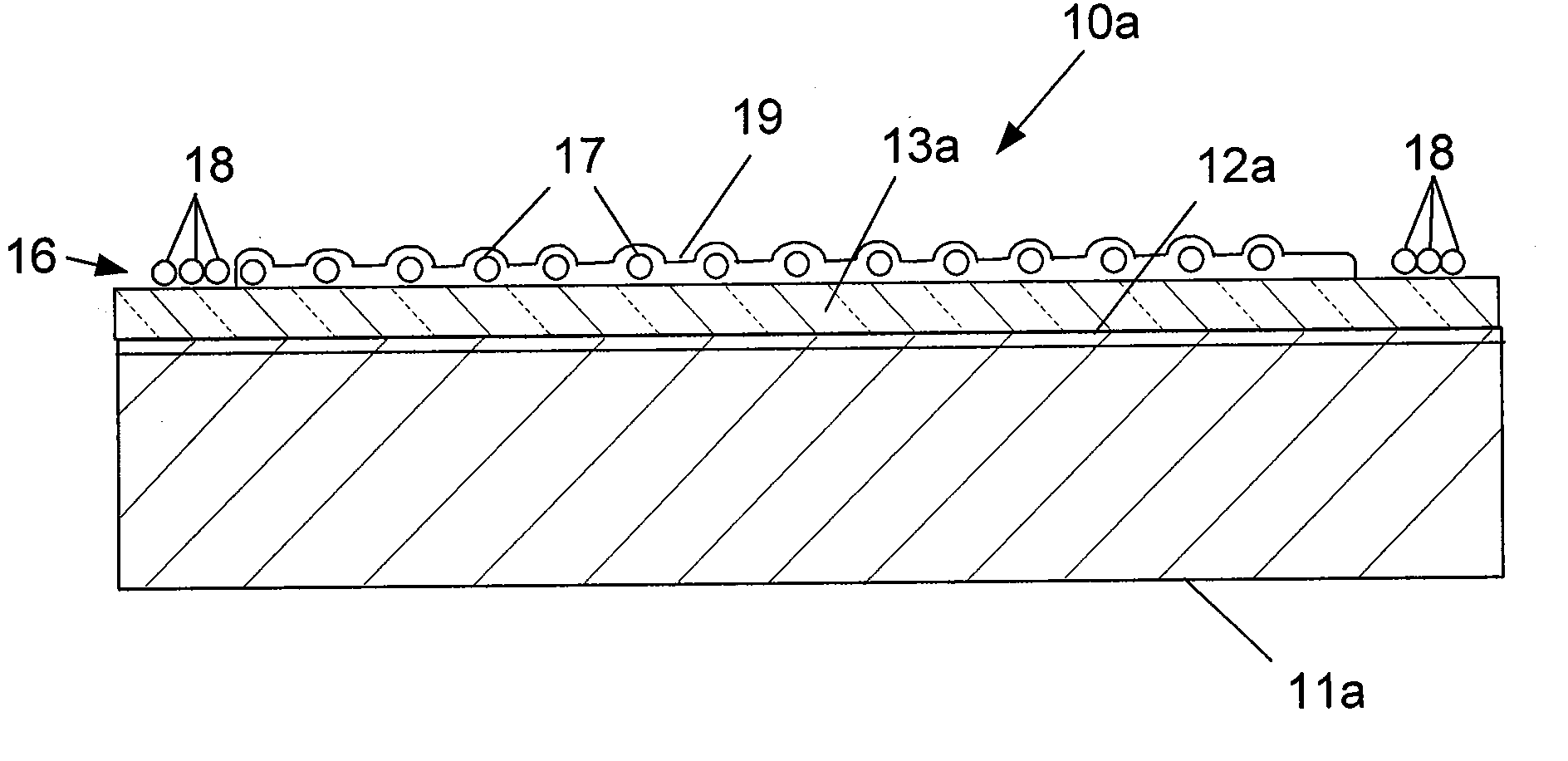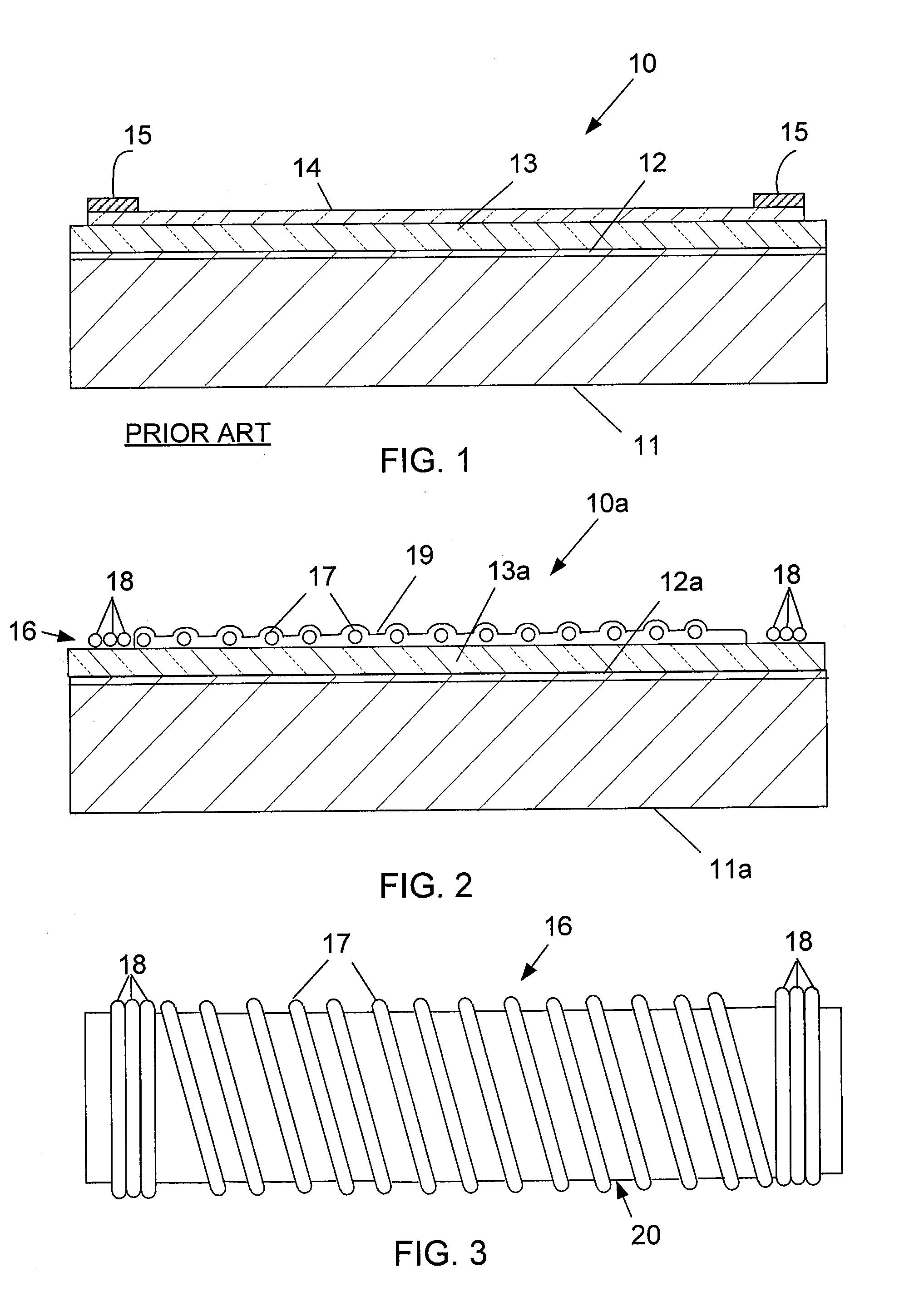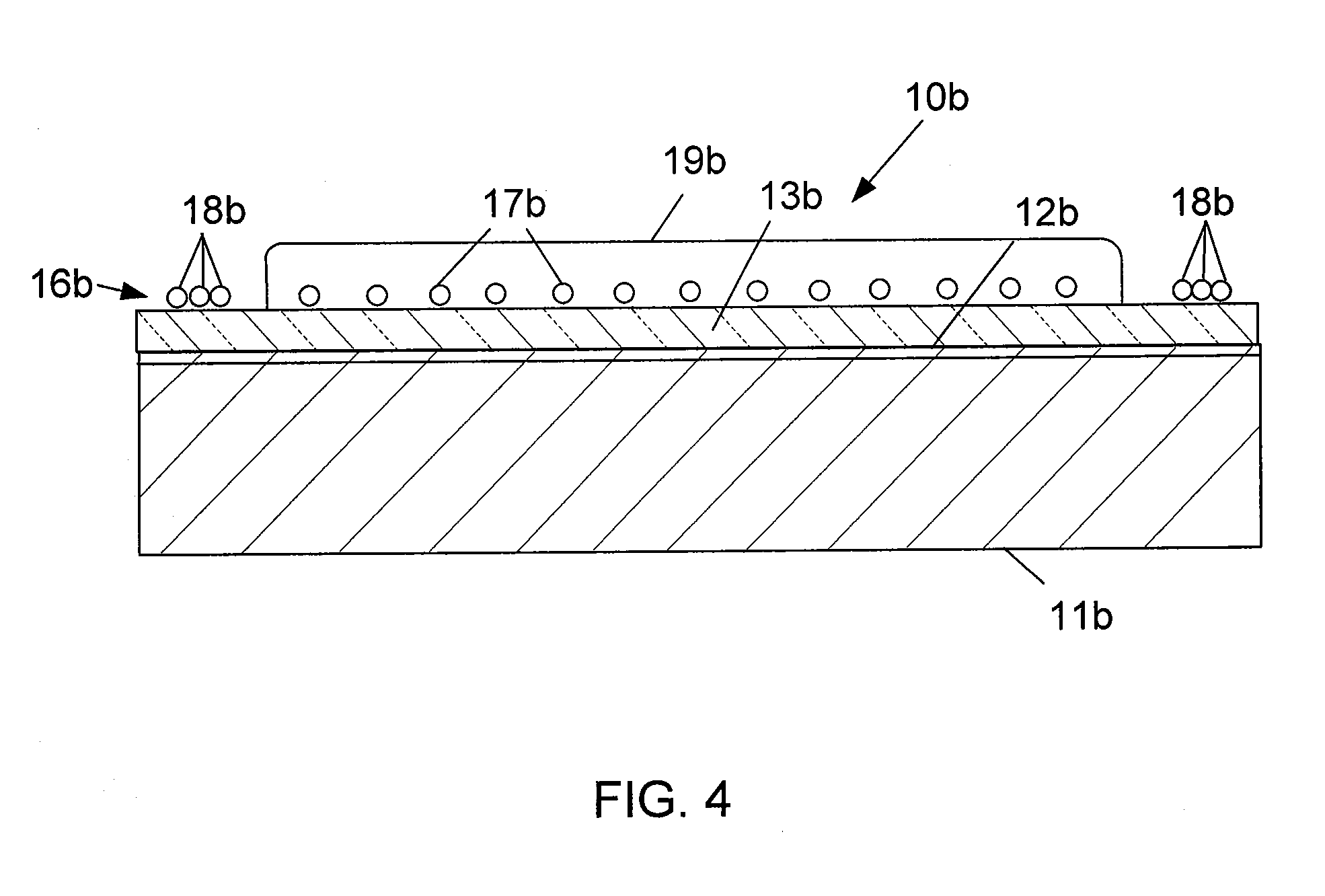Method and Apparatus for Providing a Machine Barrel with a Heater
a technology of heater and machine barrel, which is applied in the field of equipment for providing a machine barrel with a heater, to achieve the effect of improving the thermal contact of the wir
- Summary
- Abstract
- Description
- Claims
- Application Information
AI Technical Summary
Benefits of technology
Problems solved by technology
Method used
Image
Examples
first embodiment
[0036]As seen in FIG. 1, in a barrel heater 10, an extruder barrel 11 of mild steel, to which the heater sections will be applied, is first grit blasted to a 250 microinch Ra finish or higher. Extruders are used to process many kinds of materials, but the primary uses are for forming and shaping thermoplastic polymers (plastics) and elastomeric polymers (rubber compounds). Material to be extruded is initially deposited in a solid form into a feedbox. The material exits the extruder as a hot, uniform viscosity, semi-molten solid by being pushed under high pressure (extruded) through a die. The die gives the extruded material (extrudate) its cross sectional shape. Next, in forming the barrel, a thin layer of a metal bonding alloy 12 is plasma or thermal sprayed over the entire barrel (covering all heated zones) such as Sulzer Metco 450 or 480 nickel aluminide bond coat in a thickness of 3-5 mils. Areas of the barrel may need to be masked to prevent adhesion of the bonding alloy such a...
second embodiment
[0044]FIG. 4 illustrates the invention in which the top ceramic layer 19b has been expanded to be a relatively thick layer which is ground (although it does not have to be ground to be functional) to provide a smooth surface and a uniform thickness using a diamond-coated or other suitable grinding wheel. The thickness of the layer 19b above the tops of the wires 17b is about the same thickness as the wires 17b after the layer has been ground to provide a smooth surface. Layers 13b, 16b, and 19b above the wires 17b, could all be 20-25 mils thick each, for example. The thick top ceramic layer 19b improves heat transfer from the wires 17b into the barrel 11b, makes a more durable composite layer which will withstand abuse and impacts, provides electrical insulation over the current-carrying heater wires 17b, and provides a smooth surface on which to apply a conventional band heater in the event that the ceramic-wire heater fails or is damaged in some way. The extruder barrel 11b is aga...
PUM
| Property | Measurement | Unit |
|---|---|---|
| Length | aaaaa | aaaaa |
| Thickness | aaaaa | aaaaa |
| Length | aaaaa | aaaaa |
Abstract
Description
Claims
Application Information
 Login to View More
Login to View More - R&D
- Intellectual Property
- Life Sciences
- Materials
- Tech Scout
- Unparalleled Data Quality
- Higher Quality Content
- 60% Fewer Hallucinations
Browse by: Latest US Patents, China's latest patents, Technical Efficacy Thesaurus, Application Domain, Technology Topic, Popular Technical Reports.
© 2025 PatSnap. All rights reserved.Legal|Privacy policy|Modern Slavery Act Transparency Statement|Sitemap|About US| Contact US: help@patsnap.com



